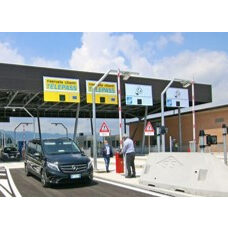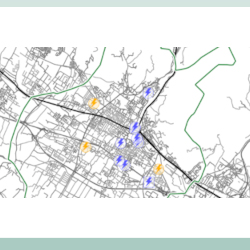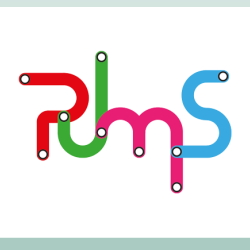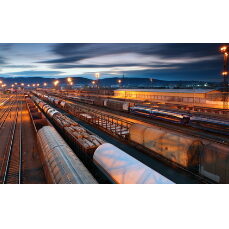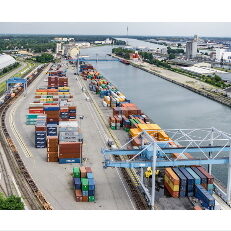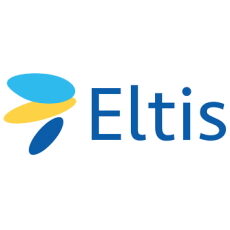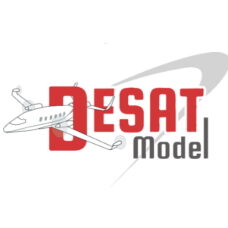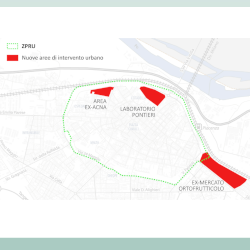- All
- African projects
- assessment
- assessment selected projects
- Assessment selected projects 2
- Assessment selected projects 3
- Assessment selected projects 4
- ASTRA
- Cost Benefit Analysis
- Electric mobility and ITS
- MOMOS
- planning
- planning selected projects
- planning selected projects 2
- planning selected projects 3
- planning selected projects 4
- planning selected projects 5
- projects
- Railways projects
- research
- research selected projects
- research selected projects 2
- research selected projects 3
- studies
- studies selected projects 1
- studies selected projects 2
- studies selected projects 3
- studies selected projects 4
- studies selected projects 5
- TRTingegneria
- TRUST
- urban mobility
- Effects of pricing policies on the Superstrada Pedemontana Veneta – Surveys, analysis and proposals The study evaluated the effects of different toll schemes on Superstrada Pedemontana Veneta traffic forecasts using the PTV Visum traffic assignment software package. The toll schemes were designed combining different combinations of toll levels, modulated according to both vehicle type and geographical area of origin for passenger and freight traffic. The alternative toll schemes were designed also taking into account the outcome of a series of interviews aimed at identifying the demand for commercial vehicles that could potentially be attracted to the new road infrastructure. The survey directly involved both local and international companies, logistics operators, sector and trade associations that would be potentially interested in using the motorway infrastructure. The survey questionnaire was aimed at understanding the respondents’ needs and requirements as well as their point of view in terms of advantages and disadvantages of using the infrastructure considering time, costs, quality of services and parking areas availability.
- Electric Mobility Plan of the city of Prato The development of an e-mobility sector plan is one of the actions foreseen by the current SUMP (2017) for both vehicular mobility (private fleets, public facilities, passengers and goods) and public and collective mobility (PT and sharing). In this sphere, the City of Prato requested the drafting of an Electric Mobility Plan (EMP) in order to indicate a scenario for the development of e-mobility, as a coherent set of measures capable of acting on the supply side (sizing and general location of electric vehicle recharging stations), and of measures to support the demand for mobility. The study envisages the construction of a cognitive framework with the aim of outlining the current and future scenario of e-mobility demand and supply On this basis, the EMP identifies: the current state of demand (composition of the circulating vehicle fleet) and supply of charging infrastructure for public use in the city; a trend scenario, projection in the future five-year period of growth rates in demand (estimates of the evolution of the electrically driven vehicle fleet) and supply of charging infrastructure for public use; an evolutionary scenario formulated in consideration of the targets set at EU and national level and indicated in recent planning and programming documents (cf. PNIRE and National Recovery and Resilience Plan-NRRP). Based on the evolutionary scenario, the infrastructural endowments are therefore sized, disaggregated according to the performance of the recharging stations (slow-accelerated or fast) intended for private and public fleets, as well as their broad locations. All these aspects represent the technical elements to support the Administration of Prato in the subsequent phase of selecting the operators who will be called upon to develop the recharging network in the urban area in accordance with the regulatory provisions. TRT was also responsible of the drafting of the Sustainable Urban Mobility Plan, the Parking Master Plan and the Urban Traffic Plan of the city of Prato In 2022, TRT also drafted Prato’s SUMP monitoring report in accordance with the indicators of DM 396 of 28/08/2019.
- Prato SUMP monitoring report in accordance with the indicators of DM 396 of 28/08/2019 TRT was commissioned by the Municipality of Prato to draw up the SUMP monitoring report. The SUMP was approved by Municipal Council Resolution no. 51 of 2017. The activity consists in verifying the state of implementation of the measures foreseen in the Sustainable Urban Mobility Plan as of February 2022, while highlighting the evolution of the descriptive variables of urban mobility (demand, supply and environmental and social impacts). This is an activity envisaged by Article 4 of the Ministry’s PUMS Guidelines (DM 397/2017). In particular, the assignment includes the following macro activities: comparison of indicators selected from the current SUMP (approved in June the 1st, 2017) and therefore prior to the issuance of the SUMP Guidelines (DM No. 397 of 4 August 2017 and the subsequent update introduced by DM 396 of 28 August 2019); adjustment of the PUMS indicators to DM 396 of 28 August 2019 and their estimation to the base year (2017) and 2021; verification of the SUMP status of implementation as for the individual measures envisaged in the two Reference and Plan Scenarios; adaptation of SUMP objectives and actions; recommendations and indications for future updating of the current SUMP as set out in the 2017 Ministerial Guidelines. The first part of the activities consists of comparing all the indicators within the current SUMP with those indicated in DM 396 of 28/08/2019 in order to align the SUMP with the new ministerial provisions. Secondly, it verifies the status of implementation of the measures foreseen by the SUMP on the basis of the close interaction between TRT and the technical structures of the Municipal Administration, in order to account for the activity put in place during the 2017-2021 period in implementing the SUMP. The combination of these activities makes it possible, on the one hand, to estimate the trend of indicators representative of the PUMS objectives and, on the other, to understand the choices made by the Administration with respect to the implementation of the measures. Finally, the intersection of the two pieces of information makes it possible to give an account of the trend of the targets set by the SUMP and to modulate the Administration’s action accordingly through the implementation of the actions in favor of sustainable mobility envisaged by the SUMP and its subsequent update. TRT was also responsible of the drafting of the Sustainable Urban Mobility Plan, the Parking Master Plan and the Urban Traffic Plan of the city of Prato In 2022, TRT also drafted Prato’s e-Mobility Plan.
- Impact assessment on measures to better manage and coordinate international rail traffic, including through revised rules for capacity allocation and infrastructure charging in rail The impact assessment study is intended to provide evidence-based support for developing a new initiative implementing: Action 19: Measures to better manage and coordinate international rail traffic, including – if necessary – through revised rules for capacity allocation and infrastructure charging in rail Action 24: EU 2021 Rail Corridor Initiative – Revise the Rail Freight Corridor Regulation of the European Commission’s Smart Mobility Strategy (COM/2020/789 final) for achieving the objectives of the EU Green Deal (COM/2019/640 final). In the Green Deal and the Strategy vision for the future EU transport system, a substantial part of the 75% of inland freight carried today by road should shift onto rail and inland waterways. Moreover, rail freight traffic is projected to increase by 50% by 2030 and double by 2050; by 2030, rail and waterborne-based intermodal transport will be able to compete on equal footing with road-only transport in the EU.
- Impact assessment support study for the new proposal addressing the development of multimodal digital mobility services and a cost-benefit analysis for the revision of Delegated Regulation (EU) 2017/1926 on multimodal travel information services Maximising multimodality and intermodality in passenger mobility is a key element in reducing transport’s contribution to climate change while ensuring that transport systems operate efficiently, both within Member States and also across the EU’s internal borders. Multimodal digital mobility services (MDMS) are, in turn, crucial to foster multimodality as they promote comparability, transparency, and the selling of products across operators and modes. MDMS bring direct benefits to users: they help people to navigate and access an increasingly complex and diverse range of transport offerings, including a range of shared mobility services, as well as to understand the role and benefits of active modes, that will help them meet their mobility needs in different, more sustainable ways. This can also help to increase accessibility more generally, and so help to reduce social exclusion, by enabling those most in need to access the mobility services that enable them to participate more fully in society. Services that support multimodal transport also help to make transport more efficient and sustainable by increasing the utilisation of the various transport services, improving their operation, and nudging users towards the more sustainable options. The study is crucial in informing the scope and focus of the actions that are necessary at the EU level to ensure that MDMS can fully contribute to the aims of the Smart Mobility Strategy and the Green Deal and, more importantly, bring their associated benefits to users and the environment.
- Analysis accompanying the Impact Assessment for the revision of Directive 92/106/EEC (Combined Transport Directive) The project aims to provide a robust evidence-based analysis to develop an impact assessment on the possible revision of the Combined Transport Directive. The objective of the revision is to increase the share of rail, SSS and IWW in the EU freight transport, reducing GHG emissions as well as other transport externalities such as congestion and accidents. The impact assessment should inform the specific measures to be included and the level of ambition of the revised Directive, including the following tasks: Task 1: analysis of the main problems and policy objectives identified by the Commission Task 2: Assessment of the policy measures according to their legal, political and technical feasibility Task 3: Analysis of the baseline scenario, including both the status-quo and the likely evolution of the problem drivers Task 4: Assessment of the economic, social and environmental impacts of each policy option Task 5 and 6: comparison of options and selection of the preferred policy options TRT is involved mainly in Task 3 and 4, providing among others EU scale modelling (ASTRA) for estimations of key variables (transport activity, modal share, fuel consumption, emissions, etc.) for the baseline and policy scenarios, and tailored cost models to quantify the economic impacts of the proposed measures and combination of measures.
- European Urban Mobility Observatory and support (ELTIS) and Urban Mobility Scoreboard (SUMI – Sustainable Urban Mobility Indicators) ELTIS, the European Urban Mobility Observatory, is a long-standing web portal (eltis.org), which has facilitated the exchange of information and best practice in the field of urban mobility in Europe for over 20 years. Financed by DG MOVE, ELTIS has expanded its remit over time, evolving from an information repository, to become the EU’s Urban Mobility Observatory. As such, ELTIS now provides a broad range of essential services (e.g. training and support tools) and became a one-stop shop for sustainable urban mobility plan (SUMP) guidance, following the integration of the European Platform on SUMPs into a new portal hosted on the European Commission website (Urban Mobility Observatory). To support the use of the SUMP guidance material available on ELTIS, the SUMI (Sustainable Urban Mobility Indicators) project aimed at developing a set of indicators to enable cities to identify deficiency areas and enhance alignment with EU policy goals. The ultimate goal has been the definition of indicators covering the seven indicator areas mentioned in the draft amended TEN-T Regulation, together with the development, implementation, and analysis of responses to a European-wide urban mobility data and indicators survey of cities proposed to be ‘urban nodes’ in the draft TEN-T Regulation. This project extends the legacy of the ELTIS portal, managed for the period 2022-2023, and updates and enhances SUMI to support the amendment of TEN-T Regulation. After having been already involved in both the previous ELTIS (2017-2021) and SUMI (2018-2020) projects, TRT has been awarded for the combined ELTIS-SUMI 2 project, as part of an international consortium led by Ricardo (UK), with Rupprecht Consult (DE), POLIS (BE), ECORYS (ML), TEPR (UK), Vision5 (AT), UITP (BE), TML (BE) and Marlon (BE). TRT contributes to the project as it comes to: publishing news items and case studies on the ELTIS Portal, and drafting new SUMP Topic Guides / Practitioner briefings, to facilitate the continued dissemination of best practice information to urban mobility professionals across Europe, chairing and organising meetings of the EU SUMP Platform Coordinating Group, bringing together representatives of the main ongoing and EU funded projects on SUMP, reviewing, updating and simplifying the set of SUMI indicators related to the indicator areas of the amended TEN-T Regulation, exploring data availability among the cities defined as urban nodes across Europe. For more information: SUMI website Previous ELTIS contract Previous SUMI contract [tw_button icon=”” link=”http://www.trt.it/en/Projects/” size=”small” rounded=”false” style=”flat” hover=”default” color=”#223468″ target=”_self”]Projects[/tw_button]
- Passenger demand for small aircrafts until 2050: design and application of a modelling tool to simulate future scenarios The background of the study is the European Clean Sky 2 programme, aiming at developing innovative technologies to reduce emissions and noise levels from aircrafts, while simultaneously developing and strengthening a globally competitive aeronautical industry in Europe. The scope of the programme does also include Small Air Transport (SAT), which is expected to contribute to the connectivity of remote regions in Europe and the rest of the world. The study provided an ATS level assessment and forecasts for Small Air Transport aircrafts, namely airplanes with passenger capacity between 9 and 19 seats and pressurized and unpressurized cabin compartment. A modelling tool has been developed to provide (i) the assessment with respect to passenger volume, fleet and flights for the base year 2019 and (ii) results for future years from 2025 to 2050 in five years steps. The main activities of the project have been related to: Review and analysis of available SAT concepts and potential business models; Design and development of the model for the estimation of demand for Small Air Transport aircrafts at European scale, supported by the related data collection and calibration process. The model is also accompanied by input and output interface, complemented with a user guide; Application of the model to forecasts future potential SAT demand for the reference scenario and two alternative scenarios by 2050; Analysis of European modelling results to evaluate the potential SAT demand for the rest of the world with a qualitative approach. TRT led the project and covered all the activities related to the model design, development and application. The subcontractor SEO Amsterdam Economics focused on the review of SAT concept and business models. For more information: Official site of Clean Aviation programme: description of Small Air Transport Transversal Activity.
- Parking supply analysis in the Municipality of Piacenza in a medium-long term perspective The Municipality of Piacenza committed TRT Trasporti e Territorio for an analysis of the current parking supply and its evolution in the medium-long time frame in relation to the transformations that will affect the Municipality in the next 10 years future. The study was carried out according to the actions that the Municipality of Piacenza has developed recently, through an important revision of the mobility planning tools. Parking policies are of particular importance and may influence the entire mobility pattern of the city. In fact, last December 2020 the Municipal Council approved the Sustainable Urban Mobility Plan (SUMP) and the Urban Traffic Plan (the Italian so called “PUT” Piano Urbano del Traffico) is currently waiting for its adoption. The city’s parking supply is always evolving, also according to the urban planning development and the accessibility of new areas that have recently become available. It is therefore of particular importance to monitor the evolution of the parking supply analysing in detail the changes that may undergo according to the measures, strategies and choices of the city’s urban plans. Analyses have shown that the areas related to the development of the New Hospital, the Ex-ACNA area, the Ex-Laboratorio Pontieri and the Ex-Mercato Ortofrutticolo would lead to an increase of about 2,100-2,300 parking spaces available in the historical centre for a total of an increase by 31%-34%. [tw_button icon=”” link=”http://www.trt.it/en/Projects/” size=”small” rounded=”false” style=”flat” hover=”default” color=”#223468″ target=”_self”]Projects[/tw_button]

